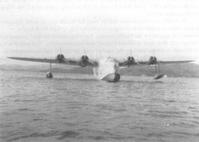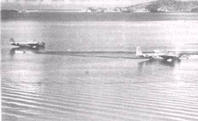


Glimpse of the RAAF Meteorological Service
Preface
Foreword
Introduction
Chapter 1: Growing Up
Chapter 2: Port Moresby Before Pearl Harbour
Sydney to Port Moresby by DH-86
First Impressions of Port Moresby
Meteorological Office Routine
Flight to Kokoda
Tropical Meteorology
John (Doc) Hogan
Setting up House
We Join the RAAF
A Contrast in Attitudes
Some RAAF History
RAAF No 10 Squadron
RAAF No 11 Squadron
The Catalina Story
Construction of the Seven-mile Airstrip and Reclamation Area
Meteorological Service for the RAAF
Unexpected Vistitors
Our State of Readiness
Our Domestic Situation
A Japanese Surprise Packet
What Had We Meteorologists Achieved?
Chapter 3: Port Moresby After Pearl Harbour
Chapter 4: Allied Air Force HQ and RAAF Command, Brisbane
Chapter 5: Japan Surrenders and We Are Demobilised
Epilogue
Acknowledgements
Appendix 1: References
Appendix 2: Milestones
Appendix 3: Papers Published in Tropical Weather Research Bulletins
Appendix 4: Radiosonde Observations 1941–46
Index
Search
Help
Contact us

RAAF No 11 Squadron
On 21 March 1939 RAAF No 50 flying boat Squadron was redesignated No 11 Squadron and equipped with two obsolete Seagull Class 5 flying boats and two unarmed Short Empire 'C' Class flying boats (see Figures 13 and 14), formerly used by Qantas in operating its sector of the England to Australia air-route.

On 28 September 1939, RAAF No 11 Squadron arrived in Port Moresby with Wing Cmdr L. J. Alexander as CO and with 15 ex-Qantas personnel (pilots and maintenance staff) and 16 RAAF personnel. The first four pilots of No 11 Squadron's two Short Empire 'C' Class flying boats were Sqn Ldr Bob Gurney, Sqn Ldr 'Goff Hemsworth, F/O Bill Purton and Sqn Ldr Eric Sims, all former Qantas pilots.
The Short Empire 'C' Class flying boats had been used by Qantas on the Sydney to Singapore run. They were luxurious but slow and had limited range. They flew only by day, passengers being accommodated overnight in Townsville, Darwin and Singapore. When the first two 'C' Class flying boats arrived in Port Moresby in 1939, they had been stripped of their luxurious appointments and were engaged in the search for enemy vessels, including submarines, and also used in establishing advanced operational bases (AOBs), in 1940–41, in the islands of New Guinea and the Solomons, at places like Kavieng, Gizo, Rabaul, Lorengau, Vanikoro, Samarai, Tulagi, Vila, Noumea, Buka and Soraken. By August 1941 the number of Short Empire 'C' Class flying boats in Port Moresby had been increased to four and they had gun mountings and long range fuel tanks installed. In the month of December 1941, these Short Empire 'C' Class flying boats carried out 100 search and reconnaissance sorties.
In 1940 it became obvious that the need for British aircraft in the European and Middle East theatres would make it impossible for the UK to meet the RAAF's requirements for aircraft for the Pacific theatre. The obsession of the hard-pressed British War Cabinet with their need to defend England was understandable. Our own War Cabinet found it difficult to choose between the need to assist the British and requirements to improve home defences. The CAC pressed ahead with the manufacture of the Wirraway fighter in Melbourne. The Australian Government was able to secure agreement of the USA that CAC should be involved in the assembly of 50 Lockheed Hudson reconnaissance/low-level bomber aircraft, a military version of the Lockheed Electra flying Australian air routes at that time.
 |
Bureau of Meteorology |  |
© Online Edition Australian Science and Technology Heritage Centre and Bureau of Meteorology 2001
Published by Australian Science and Technology Heritage Centre, using the Web Academic Resource Publisher
http://www.austehc.unimelb.edu.au/fam/0408.html